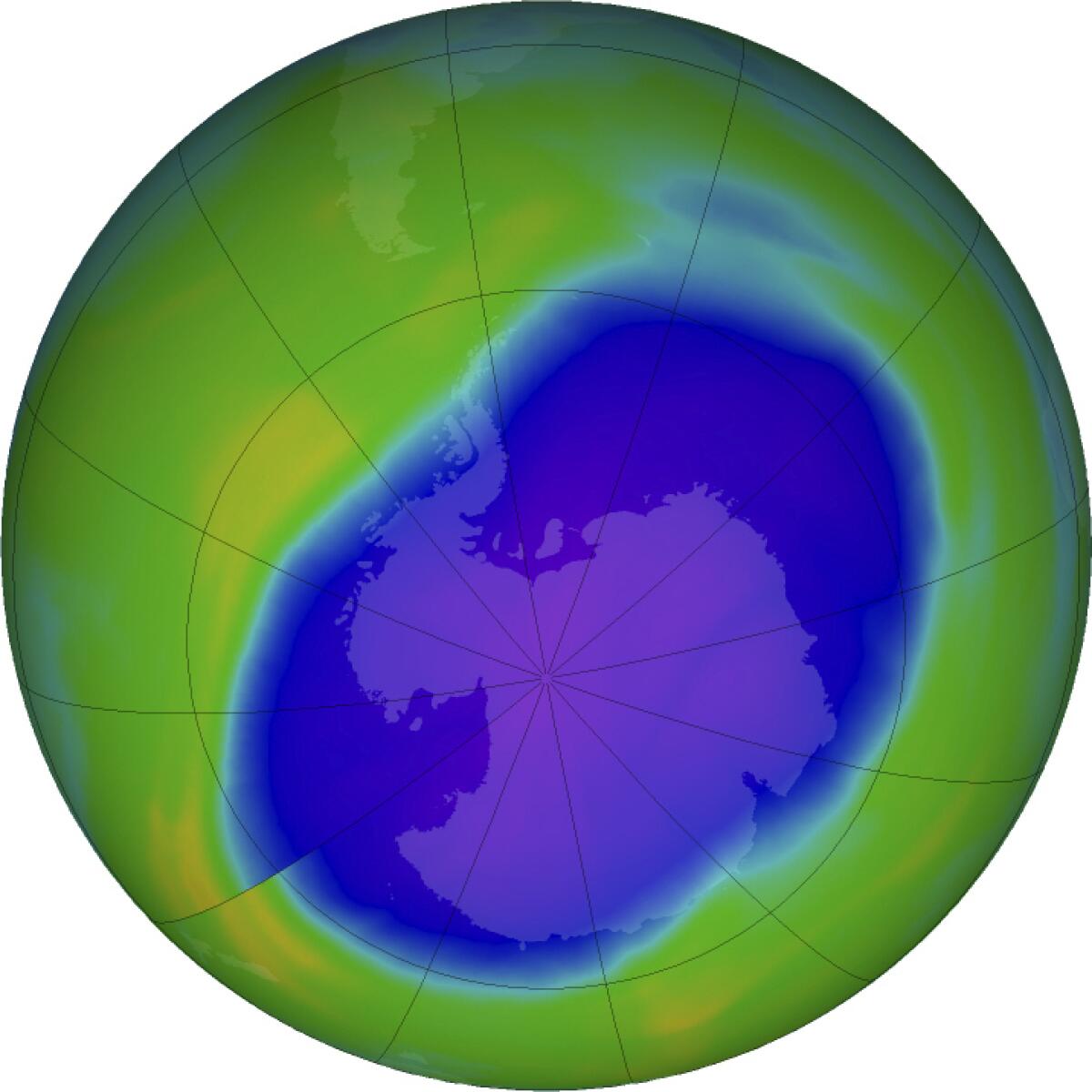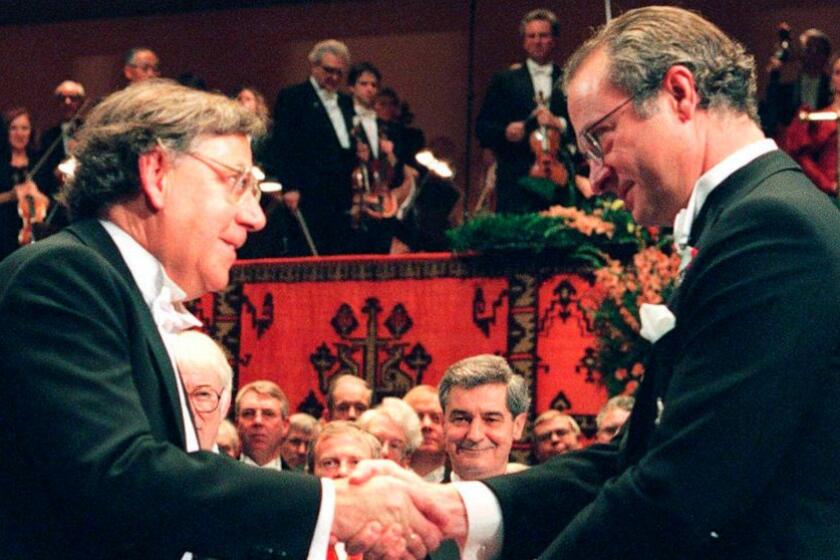Ozone layer is slowly healing, with the hole to be mended by 2066, U.N. says

- Share via
DENVER — Earth’s protective ozone layer is slowly but noticeably healing at a pace that would fully mend the hole over Antarctica in about 43 years, a new United Nations report says.
A quadrennial scientific assessment found recovery underway more than 35 years after every nation in the world agreed to stop producing chemicals that eat away at the layer of ozone in the atmosphere that shields the planet from harmful radiation linked to skin cancer, cataracts and crop damage.
“In the upper stratosphere and in the ozone hole, we see things getting better,” said Paul Newman, co-chair of the scientific assessment.
The progress is slow, according to the report presented Monday at the American Meteorological Society convention in Denver. The global average amount of ozone 18 miles up in the atmosphere won’t be back to 1980’s pre-thinning levels until about 2040, and won’t be back to normal in the Arctic until 2045, the report said.
In Antarctica — where the ozone layer is so thin that a giant gaping hole appears each year — the layer won’t be restored until 2066, the report said.
Scientists and environmental advocates across the world have long hailed efforts to repair the ozone — especially the 1987 Montreal Protocol that banned chlorofluorocarbons, a class of chemicals often used in refrigerants and aerosols — as one of the biggest ecological victories for humanity.
The world’s glaciers are shrinking and disappearing faster than scientists thought, but limiting global warming by even a little would help save them.
“Ozone action sets a precedent for climate action. Our success in phasing out ozone-eating chemicals shows us what can and must be done — as a matter of urgency — to transition away from fossil fuels, reduce greenhouse gases and so limit temperature increase,” World Meteorological Organization Secretary-General Petteri Taalas said in a statement.
Signs of healing were reported four years ago but were slight and more preliminary.
“Those numbers of recovery have solidified a lot,” said Newman, chief Earth scientist at NASA’s Goddard Space Flight Center.
The two chief chemicals that eat away at ozone are in lower levels in the atmosphere, Newman said. Chlorine levels are down 11.5% since they peaked in 1993, and bromine, which is more efficient at eating ozone but is at lower levels in the air, has dropped 14.5% from its 1999 peak, the report said.
That the level of bromine and chlorine “stopped growing and is coming down is a real testament to the effectiveness of the Montreal Protocol,” Newman said.
Paul Crutzen, who shared the Nobel Prize in chemistry in 1995, showed the world that human activities were damaging the ozone layer.
“There has been a sea change in the way our society deals with ozone-depleting substances,” said David W. Fahey, scientific panel co-chair and director of the U.S. National Oceanic and Atmospheric Administration’s chemical sciences lab.
Decades ago, people could easily buy canned refrigerants that would eat away at the ozone and pollute the atmosphere, Fahey noted. Now, not only are the substances banned, but not much remains in homes or cars as cleaner chemicals have replaced them.
Natural weather patterns in the Antarctic also affect ozone hole levels, which peak in the fall. In the last couple of years, the holes have been a bit bigger due to those patterns, but the overall trend is one of healing, Newman said.
This is “saving 2 million people every year from skin cancer,” U.N. Environment Program Director Inger Andersen told the Associated Press earlier this year in an email.
Toward a more sustainable California
Get Boiling Point, our newsletter exploring climate change, energy and the environment, and become part of the conversation — and the solution.
You may occasionally receive promotional content from the Los Angeles Times.
A few years ago, emissions of one of the banned chemicals, chlorofluorocarbon-11 or CFC-11, stopped shrinking and was rising. Rogue emissions were spotted in part of China, but have since gone back down to the expected level, Newman said.
A third generation of those chemicals, called HFC, was banned a few years ago not because it would eat at the ozone layer but because it is a heat-trapping greenhouse gas. The new report says the ban will prevent 0.5 to 0.9 degrees of additional warming.
The report also warned that efforts to artificially cool the planet by putting aerosols into the atmosphere to reflect the sunlight would thin the ozone layer by as much as 20% in Antarctica.
More to Read
Sign up for Essential California
The most important California stories and recommendations in your inbox every morning.
You may occasionally receive promotional content from the Los Angeles Times.















